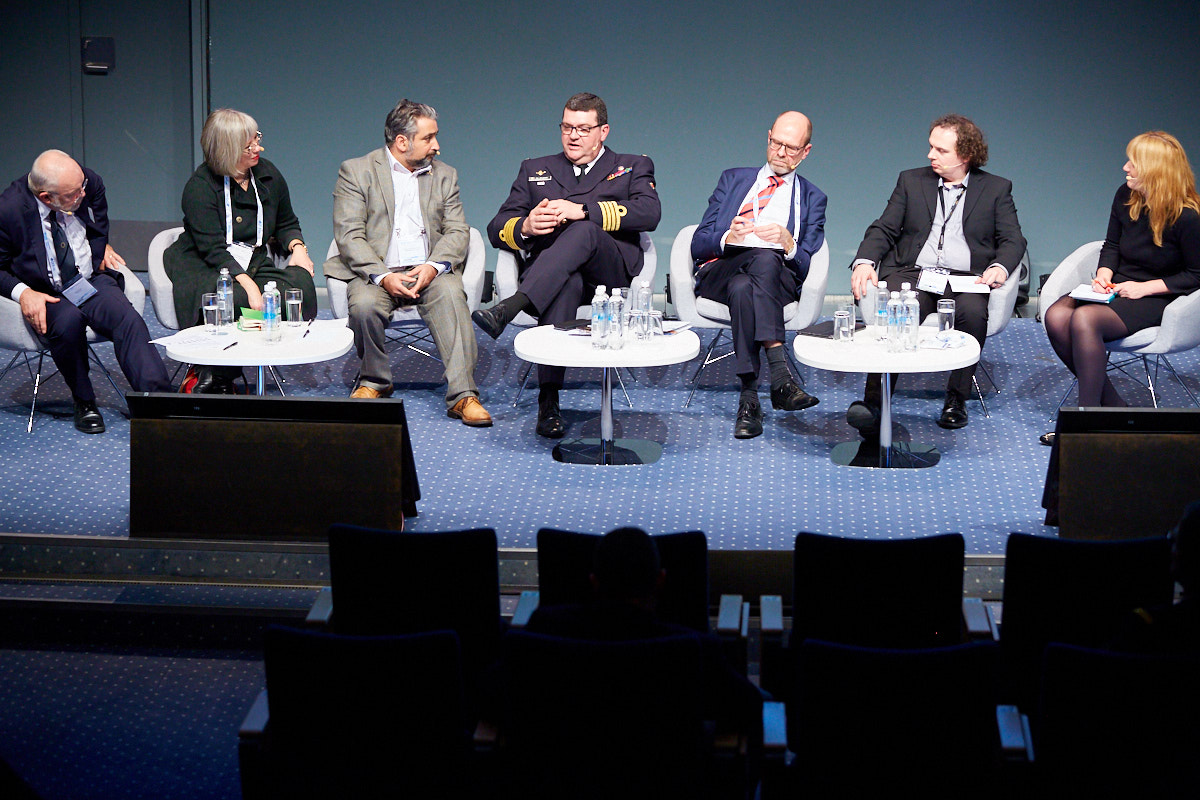News
Radar issues and lack of regulation blocks offshore deployment: here’s how we fix this

WindEurope Offshore 2019 Copenhagen
27 November 2019
In an environment of increased offshore wind energy and net-zero emissions targets, how do we keep our sea and airspace safe, secure and low-carbon? The massive expansion of offshore wind must be achieved in tandem with a happy coexistence with military and other interests at sea.
Today at WindEurope Offshore 2019 in Copenhagn, a panel of experts shared their experiences and discussed how wind energy can best work with other sea-users. Adam Nevin of Loughborough University explained that, while wind turbines can interfere with airport and weather radar, there are already numerous solutions for this. Unfortunately, these solutions – which include radar software, radar infill and blanking – are not always reliable. New radar hardware is highly effective but also highly expensive. Right now, researchers are working to find cost-effective solutions.
Rose Galloway Green, Senior Policy Advisor on Clean Electricity Offshore Wind with BEIS (UK Government), explained that interference by wind farms with radar systems is delaying new wind farm projects. Indeed, many policymakers put this top of their list for barriers to offshore wind deployment. Right now, the offshore sector is working closely with the Ministry of Defence to overcome these issues.
In terms of military involvement, Captain Jan De Beurme of the Belgian Navy explained that the Belgian Navy takes care of coastal security (critical to offshore wind farms). He reminded attendees to always remember “the three Cs”: collaboration, cooperation and counter-together. In terms of collaboration, Capt. De Beurme said “We should actually use the same radar system, the same data protocol between the military and the wind farms.” Cooperation means working together on common issues, while counter-together means developing measures to counter unidentified objects together.
ScottishPower Renewables’ Anne Mackenzie echoed this, saying that “National security needs to be maintained while delivering the energy transition.” She gave the example of Project Green Blade, which enables radar-friendly wind energy. Using holography for a new type of radar, the Theia Holographic Radar™ can see both turbines and aircraft behind them – without mixing them up.
Kåre Clemmesen, Deputy Director General of the Danish Transport, Construction and Housing Authority, gave the regulator’s perspective on aviation safety and the wind industry. Different rules have been established at different times since 2005 regarding paint markings on turbines, the positions of lights on turbines, etc. However, there is no overall trend on positioning, brightness adjustability (for example, brightening lights during search and rescue operations), etc. This lack of EU regulation means there are major disparities in terms of how rules are interpreted and implemented, depending on the location. Clemmesen urged the wind industry, aviation regulators and the military to work together towards a more simple and uniform categorisation to overcome these issues.
How can Europe reach 450 GW of offshore wind? Find out in our new report Our Energy, Our Future, How offshore wind will help Europe go carbon-neutral

